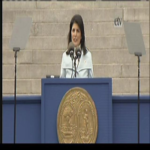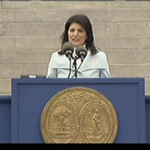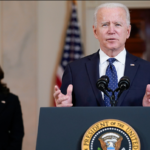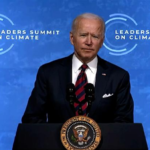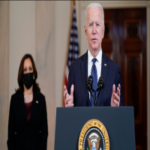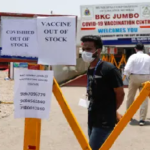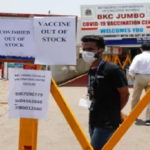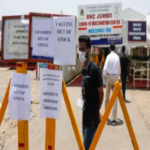02/03/2016
Rev. Dr. Dominic Emmanuel SVD
I) Introduction
South Asia is a pretty large region and I have only twenty minutes on hand. India is of course the giant in South Asia and as an Indian I am proud of it. It is generally said about India that one could confidently make a statement about India which would be true and simultaneously make an exactly opposite statement and that would be true too. While that speaks volumes of its diversity, plurality, richness and its culture on the one hand, it also speaks about the various obvious contradictions on the other. And such contradictions are galore in India.
One of the many contradictions that we deal today with is the guarantee provided in the most important document of the country – the Constitution of India on “Freedom of Conscience” versus the cunningly named, “Freedom of Religion Acts”, more popularly known as ‘Anti-Conversion Laws”. They are Laws meant to prevent the exercise of the freedom of conscience, to choose or abandon a religion of ones choice.
II) The Constitution of India
Before I go into the actual provisions guaranteed in the Constitution to every citizen, I would like to point out how the current Prime Minister of India, Mr. Narendra Modi, in his opening speech at the Central Hall after the elections in 2014, praised the Constitution to the sky. He said and I quote, “I salute all freedom fighters and also salute makers of the Constitution of our country as because of them, the world is witnessing the power of democracy… It is the power of our Constitution that a poor person belonging to a poor and deprived family is standing here today. This is the power of our Constitution and hallmark of our democratic elections that a common citizen can also reach this height. …Their faith in democracy has strengthened further”.
In a little while I will try to illustrate how this very Constitution has been sacrificed by some states, including the one where during the tenure of Mr Narendra Modi in Gujarat, the unconstitutional anti-conversion law was passed.
The Constitution of India is crystal clear with regards to the Freedom of Conscience. It states in Article 25: “Freedom of conscience”.
– Subject to public order, morality and health and to the other provisions of this Part, all persons are equally entitled to freedom of conscience and the right freely to profess, practice and propagate religion.
Please note that Article 25 is not mentioning any specific faith or people. It applies to every citizen of the country, regardless of his or her religion. The Constitution goes then further to allot some specific rights, especially to the religious denomination or any section thereof in the country in the next article.
Article 26: Freedom to manage religious affairs Subject to public order, morality and health, every religious denomination or any section thereof shall have the right
– to establish and maintain institutions for religious and charitable purposes;
– to manage its own affairs in matters of religion;
– to own and acquire movable and immovable property; and
– to administer such property in accordance with law
What makes these provisions gain greater importance is that the members of the Constituent Assembly reached this conclusion not only after considerable discussion but also because most of them did not belong to any minority religion. They had the welfare of everyone as their concern. For instance Mr. T. T. Krishnamachari held, “the same right to every religionist — to propagate his religion and to convert people, if he felt that it is a thing that he has to do and that is a thing for which he has been born and that is his duty towards his God and his community”.
Similarly another member, K. M. Munshi, said, “The Indian Christian community laid the greatest emphasis, not because they wanted to convert people aggressively, but because the word “propagate” was a fundamental part of their
tenet…I am sure, under the freedom of speech which the Constitution guarantees it will be open to any religious community to persuade other people to join their faith. So long as religion is religion, conversion by free exercise of conscience
has to be recognized. The word, ‘propagate’ in this clause is nothing very much out of the way as some people think, nor is it fraught with dangerous consequences”.
III) Freedom of Religion Acts (Anti-conversion Laws): Main clauses
It is not possible to go into details of the Acts of six different States where such laws exist. I will take the example of just some of them, as most of them are almost copycat of others.
Himachal Pradesh was the latest State Assembly to pass the Freedom of Religion Act in 2006, and the governor signed it into law in 2007. The law states, “No person shall convert or attempt to convert, either directly or otherwise, any person from one religion to another by the use of force or by inducement or by any other fraudulent means nor shall any person abet any such conversion.”
The law stipulated punishment of up to two years’ imprisonment and/or a fine of 25,000 rupees and increased penalties if Scheduled Castes/Scheduled Tribes members or minors are involved. The law also requires a Notice of Intention to be filed 30 days’ before any act of conversion, except for acts of reconversion.
The states of Chhattisgarh and Madhya Pradesh have similar legal prohibitions against conversion by force or allurement. Since 2007, state governments have proposed changes to the law that would require notification prior to any act of conversion. The 1967 Orissa Freedom of Religion Act also prohibits religious conversion “by the use of force or by inducement or by any fraudulent means nor shall any person abet any such conversion.” Penalties for breaking the law included imprisonment, a fine, or both, and are harsher if the offense involved minors, women, or an SC/ST member. The law also required that district magistrates maintain a list of religious organizations and individuals propagating religious beliefs, that individuals provide notification prior to conversion, and that clergy declare the intent to officiate in a conversion ceremony.
IV) The States with Anti-Conversion Laws
These laws currently exist in six states of India: Orissa, Madhya Pradesh, Chattisgarh, Arunachal Pradesh, Gujarat and Himachal Pradesh. Arunachal Pradesh is, however, often not included by some because though the law exists, the state has not drawn up corresponding rules without which the law is not implementable.
It is instructive to know that in addition to these six states, the state of Tamilnadu, under AIDMK government, then ally of the Bharatiya Janta Party (BJP) too had passed such a law (2003) but after a massive defeat of the party in the following elections to the Parliament, it was repealed by the then chief Minister Ms. Jayalalitha (2004), who is back currently as the chief Minister of Tamilnadu. Similarly Rajasthan, a northwestern state, under the BJP rule had passed a similar Bill (2006), but it could not be sustained as the then Governor of Rajasthan, Mrs. Pratibha Singh Patil, refused to sign it.
During its election campaign in 2014, the BJP, currently ruling at the Center in Delhi, had openly declared that once in power, it would bring such “Anti-conversion Law” for the whole of India. It is interesting to note that in the heat of election campaign how the true purpose of such laws, “Anti-Conversion Laws”, came out of their mouths, rather than the deceptive, “Freedom of Religion” laws. And soon after its victory in the Lok Sabha (Lower House), the minister in charge of Parliamentary Affairs, Mr. Venkaiah Naidu made a statement in the full Lower House that the BJP intended to bring about such a bill. This has been repeated several times by other MPs as well as by the Party President Amit Shah. Mr. Shah hails from Gujarat and is a right-hand man of the Prime Minister Mr. Narendra Modi.
In September 2015, BJP MP Tarjun Vijay announced that he was leading a private members bill for a nationwide anti-conversion law, saying: “For the first time, the population of Hindus has been reported to be less than 80 per cent. We have to take measures to arrest the decline. It is very important to keep the Hindus in majority in the country and I think a bill of this nature will… allow Hindus to remain a majority in India.”
The contradiction of freedom in democracy gets further highlighted as while the right wing Hindu BJP wants to bring in the law for the rest of the country, totally going against the Constitution and the mind of its writers, the Supreme Court of India stands with the spirit of the Constitution. For instance, Justice Bijan Kumar Mukherjea, in 1954, wrote in his judgment, “…every person has a fundamental right under our Constitution not merely to entertain such religious belief as may be approved of by his judgment or conscience but to exhibit his belief and ideas in such overt acts as are enjoined or sanctioned by his religion and further to propagate his religious views for the edification of others. It is immaterial also whether the propagation is made by a person in his individual capacity or on behalf of any church or institution”.
It should be added though that in one particular case, famously known as the Stanislaus v/s the government of Madhya Pradesh, the Supreme Court wrongly interpreted the meaning of conversion, the courts in India have generally held the right of freedom of conscience.
V) The Pushers for such Laws
The main culprit to raise voices against the Freedom of Conscience and to support such malicious laws are the right wing nationalist groups who not only blindly glorify the Indian culture to be the best in the world but who consider Christians, Muslims and Communists as the enemies of India. These are well-documented statements from the founders of these nationalist groups.
Such groups are known in India under the title of the Sangh Parivar (Family of Associations), headed by Rashtriya Swayamsevak Sangh – RSS (National Volunteer Corps) founded in 1925 along with its many vigilante representatives. They are the Vishwa Hindu Parishad – VHP (World Hindu Commission); Bajarang Dal (Bajarang Group), Akhil Bharatiya Vidyarthi Parishad (ABVP), Durga Vahini for female members, are among about 60 different groups within the Family. The BJP, currently ruling at the center is the political wing of the RSS. Since 1925 the RSS has nurtured a dream of making India a theocratic state, in this case a Hindu Rashtra (Hindu Nation), where only Hindus would enjoy the rights of full citizenship and all those non-Hindus, would be treated as second-class citizens, unable to enjoy rights of citizens.
The main defining feature of a Hindu would be the one whose ‘Holy Land’ (Punya Bhu) and ‘Father Land’ (Pitra Bhu) are both in India. This arbitrarily constructed definition by the proponents of the Hindu Nation, automatically rules out both the Christians and Muslims, as the Holy Lands for both of them is outside of India. Thus these two religionists could live on the ‘good will’ of the majority community, obeying them and following their culture and diktats.
VI) Implications, Ramifications and Side-effects of Anti-Conversion Laws
As already mentioned above, these laws are worded, coated as it were, in honey calling it, “Freedom of Religion Acts”. This is done primarily to mislead both the general public at home and the International Community outside India. The basic contradiction found here is that if such Freedom is already guaranteed in the Constitution, what is the need to make additional laws. But the moment one begins to read them, as we have seen above, the cat is out of the bag, for, it is to prevent people from having freedom to live by their conscience in matters of choosing a religion which appeals to their conscience. And such freedom is guaranteed not only in the country’s Constitution but is also so defined in article 18 of the Universal Declaration of Human Rights, to which India too is a signatory. The following are noteworthy:
1. I have often questioned this on various TV debates, whether I am the keeper of my conscience or the District Magistrate (the government). So would a government official, whose decisions are sometimes easy to buy with a little bit of bribe, would decide whether I should leave one religion and embrace another? How can I entrust my conscience to a government official? And what does he know about the other religion that I am going to embrace?
2. It is a means by the Higher castes (the Founders and office bearers of the RSS), often in power, to keep the lower castes bound in the centuries long bondage of caste system. I do not need to go into details of the outright inhuman atrocities heaped on the lowest castes by higher castes. Changing one’s religion offers the oppressed, known as Dalits, to free themselves from oppression.
3. While the missionaries are often blamed that their charity is extended to the poor to allure them to embrace Christianity, the government offers the biggest allurement to the Dalits. The infamous1950 Presidential Order, totally unconstitutional in all its aspects, particularly against the provisions of Article 15 of the Constitution, prevents people to freely change their Faith. For, once a person chooses Christianity or Islam, according to his/her conscience, he/she stands to lose all the privileges as far as education and jobs facilities provided by the government to oppressed classes, are concerned. There is a Public Interest Litigation filed in the Supreme Court of India in 2004 and despite several reminders from the Court, the government refuses to give its opinion. The fact of the matter is that if this unconstitutional provision is lifted, as it was earlier for Sikhs in 1956 and for Buddhists in 1982, there is a fear that many Dalits, would rush to embrace Christianity or Islam, to regain their human dignity, lost due to oppressive caste system.
4. The refusal of visas to missionaries: While the Constitution grants full freedom of Conscience, to both citizens and non-citizens, the government already from way back in 1954, stopped granting visas to Christian missionaries to work in India. The totally unfounded fear is that missionaries would be busy proselytizing. But that is not all. Based on such wrong perception, hundreds of Christian priests, pastors and nuns are refused visas to enter the country on a regular basis. And if ever, due to some local influence in the visa granting country by the Indian embassy, the visa is granted it always comes with a rider, “You are not allowed to preach at any place during your stay in India”.
5. Attacks on missionaries: Such government supported Acts have naturally emboldened the right wing fanatics to push their Hindutva agenda, which then translates into attacks on Christians. This is becoming more and more common now. Between November 2014 and November 2015, i.e. one year after BJP came to power, there were 400 reported incidents of attacks on Christians and their places of worship.
6. Unanswerable to the Law: The fanatics take law into their own hands, knowing fully well that the Police, themselves being Hindus, are not going to touch them. On the contrary, it often happens that the victims who go to complain to the police are themselves arrested, as some members from the attackers’ group, reach ahead to the Police station to complain against the victims. The complaints are always the same that these people were converting. Even simple prayer services of Christians are disrupted and people beaten up. This is getting worse by the day and has reached a point where individuals are afraid to conduct prayers in private.
7. Harassment of Nuns and priests: Even though India is not yet a Hindu Nation, many nuns and priests have to face constant harassment at the hands of various government officials. It could be in running their educational institutions, health centers, or many of the Charitable Institutions that missionaries run. They are constantly subjected to questioning the source of their funds, accounts, transfers in the institute, appointments in the schools, property titles, false accusations of land encroachment, water supply to the compound, false propaganda and a host of other things. The purpose is to make life difficult for Christians.
8. Denial of government posts: Despite high level of literacy among Christians and their proven record of efficiency, Christians rarely make it to government appointed posts as Chair of Commissions or Directors.
9. Denial of government subsidies: No less than a judge of the Supreme court told Collin Gonsalves, a lawyer representing the case of Orissa anti-Christian violence (2008), that Christians get a lot of foreign funds and therefore government was not obliged to give them compensation for the damages to their properties. I know of several other legitimate cases, where subsidies, otherwise granted to institutions that exist only on paper, has been refused to many Christian organizations, working for the handicapped, poor children, orphanages, the elderly or the Dalits.
VII) Nepal
A similar situation of denying freedom of Conscience is also noted in the recently promulgated Constitution of Nepal. Let us not forget that until some time ago, Nepal was the only Hindu Kingdom in the world. Now despite professing to be a democracy, and probably influenced by the propaganda by the Hindu fundamentalists in its big neighborhood India, the New Constitution of Nepal too forbids change of one’s religion.
Only in July 2015 did the Constituent Assembly agree on a text for the Constitution of Nepal and submitted it for public consultation. The text, which was adopted shortly after, included controversial language in section 26 which states that:
(1) Each person shall be free to profess, practice, and preserve his/her religion according to his/her faith
(3) While exercising the right as provided for by this article [freedom of thought, conscience and religion], no person shall act or make others act in a manner which is contrary to public health, decency and morality, or behave or act or make others act to disturb public law and order situation, or convert a person of one religion to another religion, or disturb the religion of other people. Such an act shall be punishable by law.
Section 26(1) only makes reference to the right to profess, practice, and preserve religion but not to choose, to change or to renounce religion. While this has an obvious and direct effect on freedom of religion, it also materially impacts the narrower sub category of freedom of conscience. This constitutional provision touches upon the basic and fundamental right of people to freely choose and embrace a set of beliefs (either religious or non-religious) that underpins a moral understanding of what is right and wrong.
Since citizens are not allowed to freely choose, change or leave religion altogether, they are ‘trapped’ within a religion or set of beliefs that is not the one embraced by their conscience. The impairment of a person’s freedom to maintain or change religion or belief in accordance with his or her conscience equates to coercion. Therefore, the freedom to profess, practice and preserve religion is illusory. As the UN Special Rapporteur on freedom of religion or belief has stated:
there is a clear prohibition under international human rights law of coercion to change or maintain one’s religion (…) the term ‘coercion’ (…) is to be broadly interpreted and includes (…) prohibition of conversions. Since the choice of religion or belief is part of the forum internum, which allows for no limitations, a general prohibition of conversion by a state necessarily enters into conflict with applicable international standards. A law prohibiting conversion would constitute a state policy aiming at influencing individual’s desire to have or adopt a religion or belief and is therefore not acceptable under human rights law.’
VIII) Sri Lanka
Sri Lanka is of course a small country but it too has its own problems. There is a report that I got from the Internet which says that on 12th March 2015, International Movement Against All Forms of Discrimination and Racism (IMADR), together with Franciscans International, hosted a parallel event titled “Freedom of Religion in Sri Lanka” at the 28th session of the UN Human Rights Council. The speakers for the event included Mr. Ruki Fernando, a Sri Lankan human rights defender, Mr. Mohamed Nizam Kariapper, a mayor from East Sri Lanka and the Deputy Secretary General of the Sri Lankan Muslim Congress (SLMC), and Mr. Heiner Bielefeldt, the UN Special Rapporteur on Freedom of Religion or belief. The chair and moderator for the paneled discussion was Dr. Nimalka Fernando, President of IMADR.
The event focused on how Sri Lanka can address the impact that religious extremism has had on creating an atmosphere of segregation and fear to move forward towards religious coexistence and tolerance. Given the Presidential election in Sri Lanka in January 2015, many human rights activists hope that the prevailing atmosphere of tension and discrimination directed towards religious and ethnic minorities will lift.
While Sri Lanka’s constitution acknowledges the strong presence of Buddhism in its society as a national religion, it also expresses the need for religious freedom and respect. The panellists indicated that while there have still been sporadic cases of targeted violence since after the election, there is renewed hope that a paradigm shift in how the new government responds to these acts and overall atmosphere will foster a deeper sense of democracy and open dialogue.
The focus of the event was the deep concern for the perversion of Buddhist principles that the radical Bodu Bala Sena (BBS) group of monks has used to legitimize acts of discrimination and the desire for a homogenous Buddhist state in Sri Lanka. They have been serving as a self-declared vigilante police force since 2012 that have largely been able to claim impunity given by the previous regime. They have been recorded as inciting violent riots against Muslim and Christian communities and are responsible for the burning and pillaging of churches, mosques, and shops throughout the country.
IX) Pakistan
Pakistan gained independence in 1947 and was an entirely secular state, and has subsequently become an Islamic republic since 1956. From the late 70s till the late 80s Muhammad Zia-ul-Haq’s Islamizisation took place.
Pakistan is anyway a theocratic Islamic state, unlike India, Nepal or Sri Lanka and therefore the sufferings of Hindus, Christians, Sikhs and other minorities, though should not come as a surprise but it needs to be taken into consideration.
The Pakistani government does not restrict religious publishing per se. However, it restricts the right to freedom of speech with regard to religion. Speaking in opposition to Islam and publishing an attack on Islam or its prophets are prohibited. Pakistan’s penal code mandates death penalty or life imprisonment for anyone defiling the name of the Prophet. This penal code mandates life imprisonment for desecrating the Quran, and up to 10 years’ imprisonment for insulting another’s religious beliefs with intent to outrage religious feelings.
The most problematic issue in Pakistan and which many use blatantly against the minorities is the Law of Blasphemy. It has been alleged in some cases that Muslims who have engaged in public debate about their religion have been prosecuted for blasphemy. Federal Minister for Minorities Affairs, Shahbaz Bhatti, was assassinated on 2 March 2011 for his lifelong stand against the laws and Governor of Punjab, Salmaan Taseer, was killed by his own bodyguard on 4 January 2011, for standing up for a blasphemy defendant.
X) Bangladesh
Bangladesh, former East Pakistan, has almost 89% Muslims. Although the Constitution of Bangladesh states it to be a secular state, in 1980, Islam was made the State religion. But in 2010, the High Court held up the secular principles of the 1972 constitution. The High Court also strengthened its stance against punishments by Islamic edict (fatwa), following complaints of brutal sentences carried out against women by extra-legal village courts.
The UN Special Rapporteur on freedom of religion or belief, Heiner Bielefeldt, who visited Bangladesh in September 2015 said, “the Constitution of Bangladesh, which enshrines the principle of secularism while at the same time proclaiming Islam as the official State religion gives rise to ambiguities that have a direct impact on human rights in the country, including the protection of religious minorities.”
The Special Rapporteur acknowledged the Government efforts to improve freedom of religion and belief in the country and noted specific measures taken in favour of religious minorities who feel under pressure. However the UN human rights expert observed worrying trends towards compromising the principle of secularism, possibly with the intention of appeasing religious militants.
The UN expert also noted that some of the measures established to preserve secularism seem to lead to the opposite result and to a shrinking of the very space that secularism – like democracy – is supposed to provide.
“For instance, a number of official statements on the recent murders of online activists were ambiguous. While condemning the threats and acts of violence, Government representatives also admonished individuals expressing critical views on religion, asking them not to go ‘too far’ in their criticisms,” he said.
XI) Conclusion
Only important points have been highlighted here but the atmosphere of intolerance in most of South Asian countries is growing. While the economies of these countries, particularly of the giant among them, India is doing very well with registering almost better GDP growth than China. Unfortunately most of the western countries, including the USA, are largely interested in economic advantages and shy away from raising those issues which are not only considered sacred in the West but which are the basic characteristics of civilization. Please find in appendix, a letter written by 8 senators and 26 House Representatives of the USA to Prime Minister Modi last week.
Appendix
Eight U.S. Senators and 26 members of the U.S. House of Representatives have raised “grave concerns about the increasing intolerance and violence experienced by members of…religious minority communities,” in a letter to Prime Minister Narendra Modi, citing threats to Christians in Chhattisgarh and vigilantism over beef that has led to the murder of four Muslims.
Applauding India’s commitment to pluralism and tolerance, and reminding the PM that he had promised to ensure complete religious freedom in the country, the lawmakers urged him to “turn these words into action by publicly condemning” such violence.
“Of particular concern is the treatment of India’s Christian, Muslim and Sikh communities,” the lawmakers –several of them consistently pro-India — have written to the PM. “Our strong support of this partnership encourages us to relay our grave concerns.” The lawmakers said they were also concerned about the lack of recognition of Sikhism as a distinct religion.
The Modi’s government’s drive against civil society organisations receiving foreign donations in India has been an irritant in bilateral relations for sometime now. The lawmakers’ letter on religious violence, specifically naming Vishva Hindu Parishad and Bajrang Dal that share the Rashtriya Swayamsewak Sangh (RSS) ideological universe with Mr. Modi, could be potentially embarrassing for the PM. Mr. Modi will be in the U.S. on March 31 and April 1, to attend the nuclear security summit being convened by President Barack Obama. The letter also comes against the backdrop of the Centre’s unprecedented steamrolling of political dissent in the country, which is increasingly a talking point in the U.S. capital, The Hindu reported.
“On June 17th, 2014, more than 50 village councils in the Bastar district of Chhattisgarh adopted a resolution banning all “non-Hindu religious propaganda, prayers, and speeches” in their communities. The Christian minority community has been dramatically affected: the ban effectively has criminalised the practice of Christianity for an estimated 300 Christian families in the region one day after a mob, which included members of the Vishva Hindu Parishad and Bajrang Dal, seriously injured six Christians in the village of Sirciguda. Since the ban was implemented, Christians in the Bastar District reportedly have been subjected to physical assaults, denial of government services, extortion, threats of forced expulsion, denial of access to food and water, and pressure to convert to Hinduism,” the letter said.
“We also are concerned that the nearly country-wide beef ban is increasing tensions and encouraging vigilante violence against the Indian Muslim community. On Monday, November 2nd, a Hindu mob killed Mohammed Hasmat Ali, a married father of three, in Manipur, India, after he was accused of stealing a cow. Mr. Ali reportedly is the fourth Muslim murdered in just six weeks by Hindu mobs angered over allegations of cows being slaughtered or stolen. We understand that the September 28th murder of 52-year-old Mohammed Saif in Uttar Pradesh sparked a national outcry over rising intolerance toward religious minorities which culminated in hundreds of prominent academics, business leaders, and authors protesting.”
“We want to raise additional concerns about the lack of recognition of Sikhism as a distinct religion, which prevents members of the community from accessing social services and employment and educational preferences available to other religious communities. Sikh community members reportedly are harassed and pressured to reject religious practices and beliefs distinct to Sikhism. On October 14, security forces killed two Sikhs and injured scores of others in Punjab who were protesting peacefully against the desecration of Sri Guru Granth Sahib, Sikhism’s holy book,” the lawmakers wrote.
“Mr. Prime Minister, we applaud India as a pluralistic society with a long-standing commitment to inclusion and tolerance. We also applaud your statements about religious freedom and communal harmony, including your promise in February 2014 that your government would “ensure that there is complete freedom of faith…and not allow any religious group, belonging to the majority or the minority, to incite hatred against others.” We urge you to turn these words into action by publicly condemning the ban on non-Hindu faiths in the Bastar District of Chhattisgarh, and the violent assaults and other forms of harassment against religious minorities throughout India. We also urge you to take steps to control the activities of groups, such as the Rashtriya Swayamsevak Sangh (RSS), and instruct Indian security forces to enforce the rule of law and protect religious minority communities from religiously-motivated harassment and violence.
Such steps would demonstrate your government’s commitment to fostering a stable and inclusive society and respecting international obligations on the rights of religious minorities, including religious freedom.”
“We await your response,” the letter concluded.
Senators Roy Blunt (R-MO), Amy Klobuchar (D-MN), Al Franken (D-MN), James Lankford (R-OK), Ben Sasse (R-NE), Tim Scott (R-SC) and Representatives Keith Ellison (D-MI), Joe Pitts (R-PA), Brad Wenstrup (R-OH), Jim McGovern (D-MA), Doug Lamborn (R-CO), Trey Gowdy (R-SC), Juan Vargas (D-CA), Jim Costa (D-CA), Trent Franks (R-AZ), Betty McCollum (D-MN), Mark Walker (R-NC), Doug Collins (R-GA), Tim Walberg (R-MI), Ted Poe (R-TX), Adam Schiff (D-CA), John Conyers, (D-MI) have signed the letter.
Appendix II
Article 15 in The Constitution Of India 1949
15. Prohibition of discrimination on grounds of religion, race, caste, sex or place of birth
– The State shall not discriminate against any citizen on grounds only of religion, race, caste, sex, place of birth or any of them
– No citizen shall, on grounds only of religion, race, caste, sex, place of birth or any of them, be subject to any disability, liability, restriction or condition with regard to
– access to shops, public restaurants, hotels and palaces of public entertainment; or
– the use of wells, tanks, bathing ghats, roads and places of public resort maintained wholly or partly out of State funds or dedicated to the use of the general public
– Nothing in this article shall prevent the State from making any special provision for women and children
– Nothing in this article or in clause ( 2 ) of Article 29 shall prevent the State from making any special provision for the advancement of any socially and educationally backward classes of citizens or for the Scheduled Castes and the Scheduled Tribes






 Onam is a festival celebrated in the south-western state of Kerala, India. The Keralites or the Malayalees, the illustrious people of the beautiful state are known around the world, celebrate the festival of Onam wherever they are.
Onam is a festival celebrated in the south-western state of Kerala, India. The Keralites or the Malayalees, the illustrious people of the beautiful state are known around the world, celebrate the festival of Onam wherever they are. Gurbachan Kaur Shewakramani one of the founders and the strength behind the club for all these years welcomed all and took pride in introducing all acquired activities and plans of the club and its vision. She individually has elaborated and implemented programs and services.
Gurbachan Kaur Shewakramani one of the founders and the strength behind the club for all these years welcomed all and took pride in introducing all acquired activities and plans of the club and its vision. She individually has elaborated and implemented programs and services. ree entry, was well attended by over 15,000 attendances of Indian Americans; and people belonging to different nationalities. It saw multigenerational families dressed in traditional garb. Festival was inaugurated by Tom Barrett – Mayor City of Milwaukee, Clair Zautke – office of Chris Abele Milwaukee County Executive, Dr. Ausaf Sayeed – Consulate General of India – Chicago, Katherine Thorat – Air India Chicago, Steve Ponto – Mayor Brookfield, Shawn Reilly – Mayor Waukesha, Stephen Scaffidi – Mayor Oak Creek, Banga “Ginger” Kollmansberger – Regional Director Office of Senator Ron Johnson, Ossie Kendrix – Deputy State Director Office of US Senator Tammy Baldwin, John Chistholm – Milwaukee County District Attorney. Traditional lighting ceremony, Indian flag hoisting, short-but-sweet motivating speech by the guests captivated audience. Mr. Darshan Dhaliwal – president of Dhaliwal Enterprises, Cardiologist Dr. Iftekhar Bader, businessman Mr. Laxman Kailas were some of the influential figures were seen at the venue.
ree entry, was well attended by over 15,000 attendances of Indian Americans; and people belonging to different nationalities. It saw multigenerational families dressed in traditional garb. Festival was inaugurated by Tom Barrett – Mayor City of Milwaukee, Clair Zautke – office of Chris Abele Milwaukee County Executive, Dr. Ausaf Sayeed – Consulate General of India – Chicago, Katherine Thorat – Air India Chicago, Steve Ponto – Mayor Brookfield, Shawn Reilly – Mayor Waukesha, Stephen Scaffidi – Mayor Oak Creek, Banga “Ginger” Kollmansberger – Regional Director Office of Senator Ron Johnson, Ossie Kendrix – Deputy State Director Office of US Senator Tammy Baldwin, John Chistholm – Milwaukee County District Attorney. Traditional lighting ceremony, Indian flag hoisting, short-but-sweet motivating speech by the guests captivated audience. Mr. Darshan Dhaliwal – president of Dhaliwal Enterprises, Cardiologist Dr. Iftekhar Bader, businessman Mr. Laxman Kailas were some of the influential figures were seen at the venue.












